A city globally recognised for its red sandstone buildings was mainly developed during the Middle Ages, notably with the creation of a priory at the end of the 8th century. Collonges-La-Rouge became important in the 16th century when Turenne, an adjacent town, became the capital of the region. That is when the town of Collonges-La-Rouge enjoyed the construction of a number of noble residences. Thereafter, the city was transformed into a stone quarry in the 19th century following the exodus of its inhabitants, the village of Collonges-la-Rouge regained its dynamism through mixed farming and goose rearing. From the mid-twentieth century the city focused on tourism to remain active.
Collonges-La-Rouge is a city full of history that will enchant you with its picturesque charm and famous red sandstone. The city is considered as one of the “Most Beautiful Villages in France” and more importantly, Collonges-La-Rouge is at the origin of the creation of this label in France. If you’re a fan of medieval architecture, you will definitely be fond of this charming city. Collonges-La-Rouge is a perfect city to visit by foot, allowing you to appreciate its narrow streets and learn about the history of important key places in the city. Collonges-La-Rouge is a must see in the region because of its stunning display of both beauty and history.
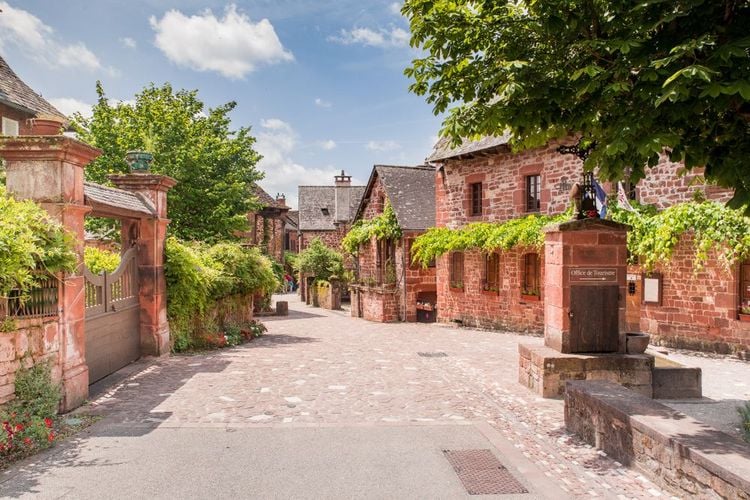
Collonges-La-Rouge
- © lauravr / ShutterstockCollonges-La-Rouge’s history
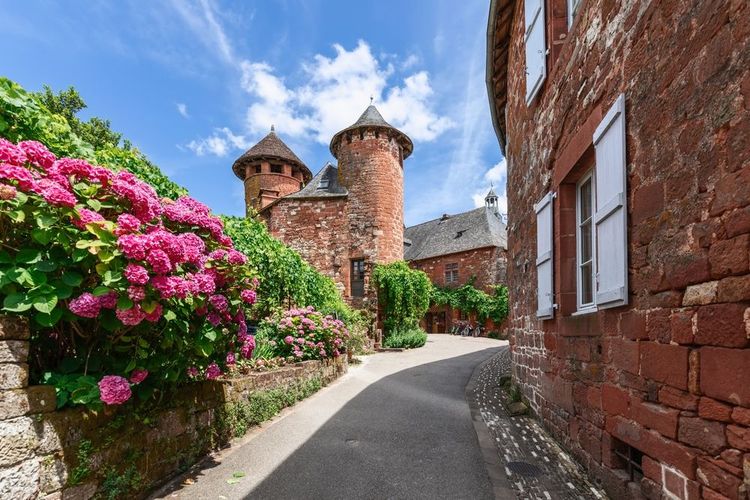
Collonges-La-Rouge
- © Artyart / ShutterstockExploring the city
Saint Pierre Church
Take a moment to observe the Saint Pierre Church, a Romanesque place of worship established around 1060-1070. Its remarkable 12th-century octagonal bell tower is of particular interest, towering over 20 meters in height. This bell tower, known as the Limousin Bell Tower, is renowned for its unique structure and unconventional construction. The tympanum, crafted from limestone between 1130 and 1140, exhibits a finer quality than sandstone. Towards the end of the 14th century, the church underwent fortification and expansion. A second, shorter nave was added, accompanied by a second bell tower. This alteration contributed to the church's irregular appearance and made it distinct from typical structures. During the 15th and 16th centuries, four chapels of varying sizes were incorporated into the church, further enhancing its atypical character. In the 16th century, amidst the Wars of Religion, the church underwent additional fortification with the inclusion of a square tower known as the watchman's tower. This tower featured loopholes and archways, serving a defensive purpose. This beautiful church is a must see of the city. The church has a policy of free admission all year round from 9.30am to 7pm.
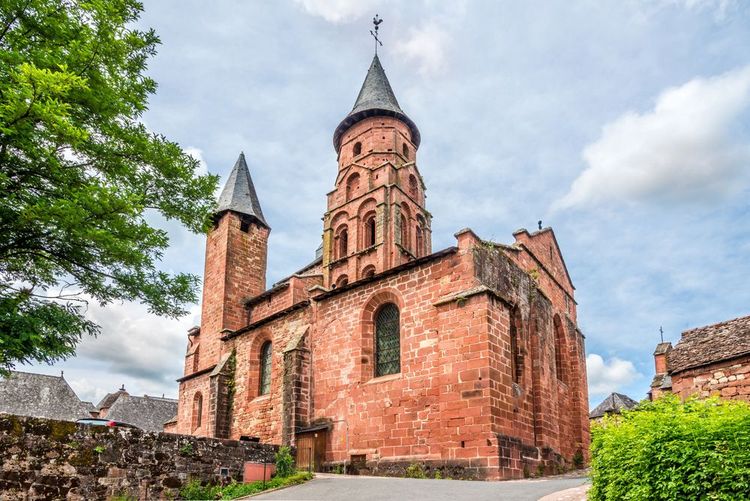
Saint Pierre Church
- © milosk50 / ShutterstockThe Chapel of the Penitents
The Penitents' Chapel, dedicated to Saint Maximin, originated in the 14th century and was associated with the priory of Collonges. It served as a burial ground for certain local families. Between the mid-17th century and the late 19th century, it transformed into the gathering place for the Pénitents Noirs, a lay brotherhood engaged in acts of piety and charity. These individuals would march in processions while dressed in black attire and hooded robes. Numerous religious artifacts housed within the chapel were once the possessions of this brotherhood. These include procession lanterns and passion crosses used during the opening ceremonies of Holy Week. The recumbent figure of Christ, displayed in the church, was also transported and exhibited by the black penitents on Good Friday. After the disappearance of the brotherhood, the chapel fell into disrepair, resulting in the collapse of its roof. However, the Friends of Collonges association initiated restoration efforts in 1927 by raising funds. Since 2016, visitors have been able to admire contemporary stained glass windows in the chapel. These windows showcase intricate designs that interact with sunlight, casting vibrant and ever-changing projections. Visiting the Penitents' Chapel is completely free.
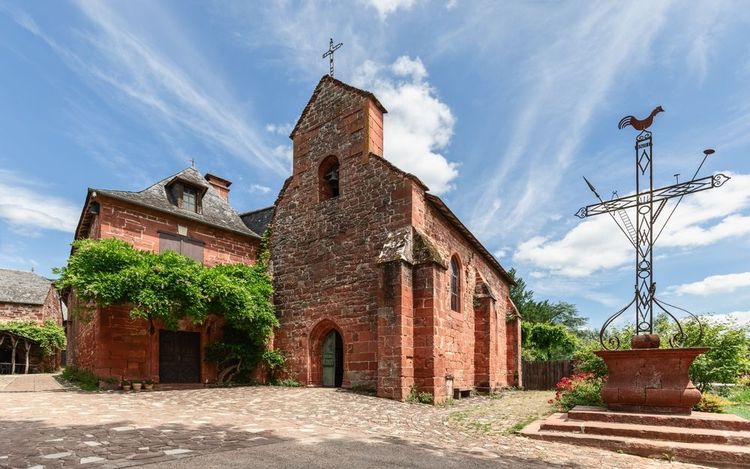
The Chapel of the Penitents
- © Artyart / ShutterstockThe Market Hall and its Communal Oven
A visit to the Halle de Collonges is a must. Constructed during the 16th century, this building served as a marketplace for wine and walnut oil until 1897. Interestingly, it is situated on the grounds of the original cemetery. The hall's pillars, which take on a cylindrical shape near the "Porte Plate" and a cubic form opposite the church, provide support for a splendid chestnut framework. Take a closer look at the rear of the market hall, and you will notice a bread oven known as the "four banal." During the Middle Ages, the inhabitants had to pay a tax, called the ban, for utilizing this communal oven. In 1977, the oven was restored, and it continues to be an attraction during village festivities. For instance, it is lit up during events like the bread festival held on the first weekend of August, the Venetian parade, and the heritage weekend. Exploring the Market Hall of Collonges allows you to appreciate its historical significance and discover the communal oven that once played an important role in the daily lives of the inhabitants. This site can be seen at any time, as it is an open space in the city.
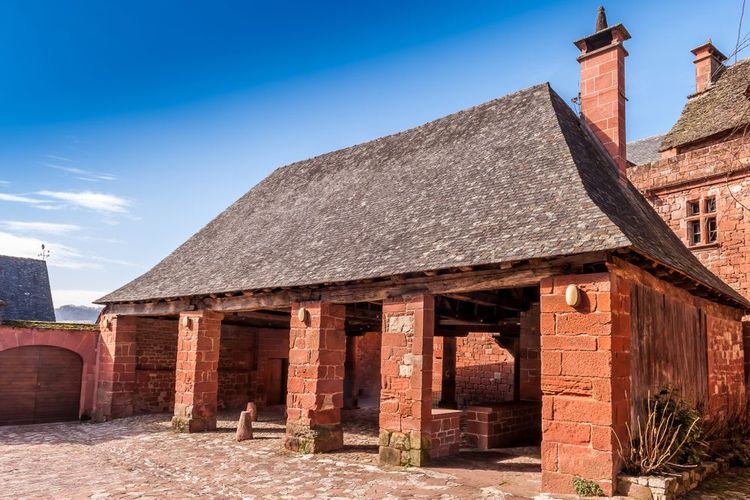
Old market halls
- © FredP / ShutterstockThe Mermaid House
During the summertime, the Maison de la Sirène welcomes visitors to explore its historic interiors. This 16th-century house, located in Collonge, offers a fascinating glimpse into the past. Its name originates from a captivating mermaid sculpture situated at the upper right corner of the entrance door. Inside, you will discover a museum dedicated to folk art and traditions. The exhibition rooms include a section showcasing local archaeology and geology, providing insights into the area's history. Another room meticulously recreates the interior of a laundress, complete with furniture, linens, and other period-specific details. Additionally, there is a temporary exhibition room that hosts rotating displays. When visiting the Maison de la Sirène, you have the opportunity to immerse yourself in the rich cultural heritage of the region.
What to do in the summer?
July and August:
The Théâtre de Verdure in Collonges-la-Rouge puts on a highly entertaining theatre festival. During the summer, you can enjoy an open-air play in an idyllic setting! Every Tuesday during the summer (for 6 weeks), at 9.30pm. If you are interested in the plays: click here.
First weekend of August:
The Bread Festival during which you can enjoy local produce and artisan breads in the heart of the village. Every year, a bread oven that dates back to the 16th-century is relit for the occasion. This traditional festival is a chance for the curious to discover how bread is baked over a wood fire, and for gourmets to sample a pie called “tourte” that's still warm from the oven… During the weekend, local producers come to sell their produce at the gourmet market and a folklore group provides entertainment for the village.
August 15th:
On August 15th, Collonges is the place to be for any artistically inclined visitors Every year, the Plastic Arts and Crafts Festival gathers around a hundred artists in the narrow streets of Collonges. This festival is a great opportunity to discover professional and amateur artists of all ages and from all regions. During the event watercolourists, pastelists, painters, ceramists, stained-glass artists, jewellery designers, educational game designers, sculptors and photographers take part in the celebration. This day in Collonges-La-Rouge is all about creative freedom.
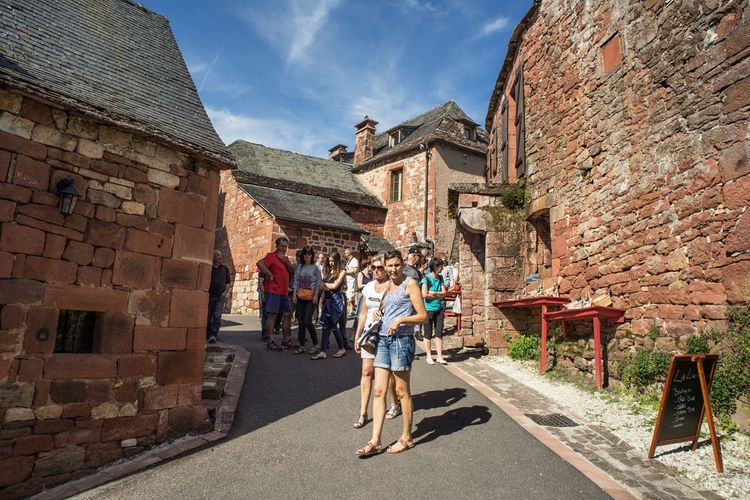
Collonges-La-Rouge
- © HUANG Zheng / ShutterstockWalk around the city
During the summer, it is enjoyable to walk and discover the city. To appreciate Collonges-La-Rouge history and heritage it is recommended to take at least 1h-1h30 to discover all the wonders of the city. Take a stroll and explore every nook and cranny of the village so you don't miss a thing!
Where to eat?
Le Cantou
A restaurant that offers great food and has great reviews from other customers. A full menu with Starter, Main Course and Dessert is €27. Whereas Starter, Main Course or Main Course, Dessert is €22. And one course is approximately €17 in total. This restaurant is considered one of the best in the city. The restaurant’s link: here.
Les Pierres Rouges
A restaurant located in a charming castle. At Les Pierres Rouges, you’ll find an array of local food and ingredients with the opportunity to sit outside with a pretty setting and a charming terrace. In this restaurant the prices can be higher than the average €30-€40 for a full menu but it remains a nice address. The restaurant’s address: Rue de la Sirène, 19500 Collonges-la-Rouge.
Practical information about your visit
Our favourite hotel in Collonges-La-Rouge:
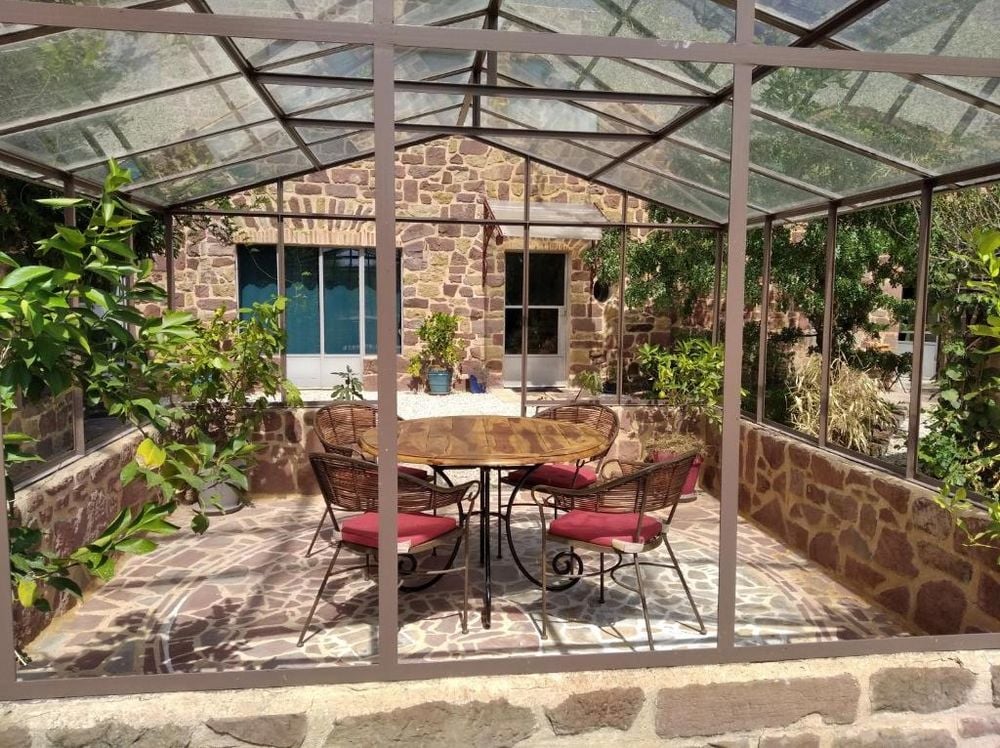 Collonges-la-rouge
Collonges-la-rouge
Le palmier d'Alice
Book your room nowHow to get to Collonges-la-Rouge?
By car:
- From the north or south : A20 motorway then exit 52 (Noailles-Collonges-la-Rouge) and then 15km of road (D158 then, D38).
- From Brive : 19 km, 23 mins. Follow the D38 (Meyssac, Beaulieu-sur-Dordogne).
- From Tulle : 44 km, 46 mn. Take the D940 towards Beaulieu-sur-Dordogne, then turn right onto the D38 towards Meyssac.
- From the east or west : Follow the A89 or the N89, then take the A20 south. Exit at junction 52 (Noailles-Collonges-la-Rouge) and follow the road for 15km (D158 then D38).
By Plane:
- Limoges airport is the closest airport connecting the city of Collonges-La-Rouge. The airport is 1h45 minutes away from the city.
By train:
- The nearest train station is Brive (20 km). To purchase tickets: click here.
Where to park in Collonges-La-Rouge?
The best place to park is on the two free park spaces located at the bottom of the village towards Saillac on Place duMarchadial. But if you can’t park there, there are two paid car parks from February to November from 10am to 7pm and from 10am to 8pm in July and August. The Chaulet car park (at the entrance to the village on the right as you come from Brive) pay parking from 6am to 7pm and the school car park is open from 10am to 7pm. Both of them are charged at 3€/24h in February, March and November and 4€/24h from April to October - free for the 1st 1/2h (payable in cash or by credit card) and from 12pm to 2pm.
For people with a disability card, you can park on three spots: at the top of the village (near the old train station), opposite the Town Hall, next to the fountain or next to the wash-house.
Some things to keep in mind for your visit:
- The best way to get around the city is by foot because the heart of Collonges-La-Rouge is entirely pedestrianised.
- The best way to get to the city is by car.
- Useful Links: Visit Dordogne Official Website





